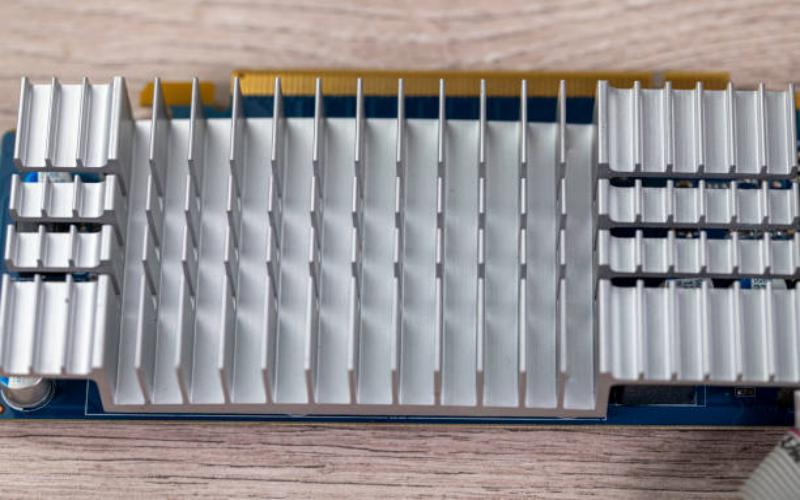The Importance of Heat Sinks in Electronics: A Comprehensive Guide
Introduction
Heat sinks are an essential component in electronic devices that help dissipate heat and maintain optimal operating temperatures. With the increasing complexity and power of electronic devices, understanding the purpose and significance of heat sinks has become crucial. In this article, we will delve into the various aspects of heat sinks and their importance in electronic systems.
1. Understanding Heat Dissipation
Heat dissipation is a critical process to prevent electronic components from overheating, which can lead to reduced performance, premature failure, or even permanent damage. Heat sinks play a vital role in this process by efficiently transferring heat away from sensitive components.
Heat is generated in electronic devices due to the flow of electric current through various components. This heat must be dissipated to prevent temperature rise, as excessive heat can affect the performance and reliability of these components.
2. What is a Heat Sink?
A heat sink is a passive cooling device that absorbs and dissipates heat generated by electronic components. It is usually made of a thermally conductive material, such as aluminum or copper, which helps in efficiently transferring heat away from the source.
The heat sink is designed to increase the surface area available for heat transfer, allowing the heat to dissipate into the surrounding environment more effectively. The increased surface area facilitates better conduction and convection, resulting in improved heat dissipation.
3. How Does a Heat Sink Work?
A heat sink works on the principle of conduction, convection, and radiation. When a heat sink is in direct contact with a heat-generating component, it absorbs the heat through conduction. The heat then spreads across the surface of the heat sink, which increases the available surface area for heat dissipation.
Convection comes into play as the heat energy is transferred from the heat sink to the surrounding air. The increased surface area of the heat sink allows for better airflow, facilitating convection and aiding in the dissipation of heat.
Additionally, a heat sink also radiates heat energy in the form of thermal radiation. The heat energy emitted by the heat sink is absorbed by the surrounding environment, further aiding in the cooling process.
4. Types of Heat Sinks
Heat sinks are available in various shapes and sizes to cater to the diverse cooling requirements of different electronic devices. Some common types of heat sinks include:
- Finned Heat Sinks: These heat sinks have fins that increase the surface area for better heat dissipation.
- Plate Heat Sinks: These heat sinks are flat plates with a large surface area to maximize heat transfer.
- Pin Heat Sinks: These heat sinks consist of numerous pins that enhance the surface area for improved cooling.
- Active Heat Sinks: These heat sinks incorporate additional cooling mechanisms, such as fans or pumps, for enhanced heat dissipation.
5. Factors Affecting Heat Sink Performance
Several factors influence the performance of a heat sink. These include:
- Thermal Conductivity: The thermal conductivity of the heat sink material determines how effectively it can transfer heat.
- Surface Area: The larger the surface area of the heat sink, the better the heat dissipation.
- Fin Design: The shape, size, and spacing of the fins on a heat sink impact its cooling efficiency.
- Airflow: Adequate airflow around the heat sink is crucial for effective heat dissipation.
6. Applications of Heat Sinks
Heat sinks find applications in a wide range of electronic devices, including:
- Computers and Laptops
- Televisions and Monitors
- Smartphones and Tablets
- LED Lighting Systems
- Power Supplies
- Automotive Electronics
7. Importance in Overclocking
Overclocking is a popular practice among computer enthusiasts to increase the performance of their systems. However, overclocking can lead to higher heat generation, requiring efficient heat sinks to prevent overheating.
Heat sinks with superior thermal conductivity and larger surface areas are often preferred for overclocked systems. They help dissipate the excess heat generated by the overclocked components, ensuring stable and reliable performance.
8. Thermal Management in Electronic Systems
Heat sinks are an integral part of thermal management in electronic systems. They work in conjunction with other cooling mechanisms, such as fans or liquid cooling systems, to maintain optimal operating temperatures.
Efficient thermal management not only ensures the longevity and reliability of electronic devices but also improves their overall performance. It helps prevent thermal throttling, which occurs when a device reduces its performance to prevent overheating.
9. Future Developments in Heat Sink Technology
As electronic devices continue to evolve and become more powerful, the need for advanced heat sink technology is growing. Researchers are constantly exploring new materials and designs to enhance heat sink performance.
New materials, such as graphene and carbon nanotubes, are being investigated for their superior thermal conductivity properties. Additionally, innovative heat sink designs, such as microchannel heat sinks and vapor chamber heat sinks, are being developed for more efficient heat dissipation.
10. Conclusion
Heat sinks play a crucial role in maintaining the optimal operating temperatures of electronic devices. By efficiently dissipating heat, they prevent performance degradation, premature failure, and permanent damage to sensitive electronic components.
Understanding the purpose and significance of heat sinks is vital for engineers, designers, and anyone involved in the development and maintenance of electronic systems. With advancements in heat sink technology, we can expect even more efficient cooling solutions in the future.

